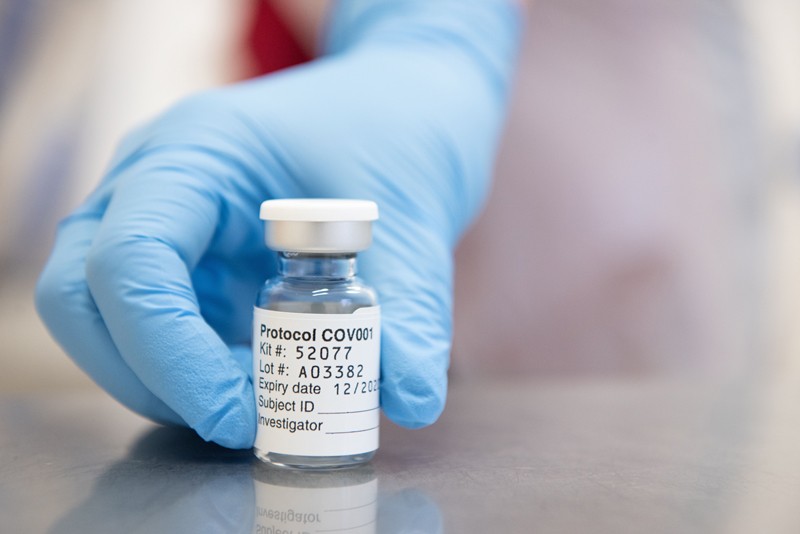
COVID-VACCINATION RELATED CHALLENGES
CONTEXT
There was a decrease in the number of vaccine doses administered in the week starting 1st May 2021, after the government “opened up” vaccination beyond priority groups, to its lowest level in eight weeks.
CHALLENGES TO VACCINATION DRIVE AT GLOBAL LEVEL AND IN INDIA
GLOBAL LEVEL CHALLENGES
Development and production – Vaccines often suffer from underinvestment,9 but that has not been the case in this pandemic.
o Before this pandemic, there were no existing networks of contract manufacturers for several of the leading vaccine candidates that feature novel technologies, including those relying on mRNA delivery platforms.
o Additionally, the volume of vaccines that is needed places pressure on global supply chains for inputs, such as glass vials, syringes, and stabilising agents.
o A successful solution to the production bottleneck would probably require widespread technology transfer to enable the expansion of manufacturing capacity.
Affordability – Mechanisms are needed to ensure the affordability and sustainable financing of COVID-19 vaccines in low-income and middle-income countries, which are home to about 85% of the global population and which might lack the resources to buy adequate quantities of vaccines.
o Vaccine prices are especially important for COVID-19, on account of the volumes demanded.
o Depending on the duration of protection offered by these vaccines, as well as the potential need for modified vaccines that protect against new variants, these purchases could become recurring expenses
Sustainable Funding – To fund COVID-19 vaccines and vaccination programmes, including the costs of distribution, administration, record-keeping, and surveillance, governments will need substantial national revenue generation or external aid.
o These financial pressures are coming at a time when many economies are in crisis due to the pandemic.
Global allocation – Scarcity in supply coupled with the large volumes of pre-orders made by richer countries creates challenges to achieving timely, universal access.
o Uneven access to vaccines would not be unprecedented. During the 2009 H1N1 influenza pandemic, rich countries bought up most of the global supply of pandemic influenza vaccines, leaving inadequate amounts for resource-poor countries, many of which were among the world’s worst affected.
o To avoid a repeat of the H1N1 scenario, in April, 2020, WHO announced the creation of a global allocation mechanism, the COVID-19 Vaccine Global Access (COVAX) Facility, coordinated jointly with CEPI and Gavi.
o COVAX is a pooled procurement initiative that, in addition to seeking to secure low prices, aims to provide all countries with access to a diversified portfolio of vaccines during the acute phase of the pandemic in 2021.
Threats to equitable allocation
o A greater threat to equitable allocation comes from national procurement strategies that might leave COVAX with inadequate supply.
o Many high-income countries have opted not to purchase their vaccines via COVAX and instead have sought to gain priority access to abundant quantities of COVID-19 vaccines by striking advance purchase agreements with developers.
Deployment – Logistical and administrative challenges
o Robust data infrastructure will be needed for local authorities to identify eligible individuals by priority group, send invitations, arrange transport for older patients and patients with disabilities, and recall individuals to receive the second doses of some vaccines.
o Many low-income and middle-income countries will face barriers in delivering vaccination programmes to their entire adult populations, ensuring completion of two dose vaccination schedules, and maintaining cold or ultra-cold supply chains.
Vaccine hesitancy – Deployment can also be hampered by vaccine hesitancy, potentially leading to refusal or delayed acceptance of COVID-19 vaccines. Hesitancy is prevalent in low income and high-income countries alike, with sceptics found in all socioeconomic, religious, and ethnic groups.
CHALLENGES IN INDIA
Delivery Dynamics – Operational issues of vaccine production, procurement, supply chain, prioritisation for sequenced administration in the population, and monitoring of impact will pose major challenges.
o A comprehensive roadmap for the vaccine rollout, factoring in manufacturing sites, distribution points and last-mile health utilities, and ensuring that there is minimal wastage and the vaccine is stored at the right temperatures in cold chains, is still in the works.
o In the absence of such a blueprint, vaccine-makers are apprehensive the blame for the impending acute vaccine shortage will be placed at their door.
Limited Suppliers – Limited capacity of the two vaccine (COVAXIN & COVISHIELD) manufacturers who are now being piled upon with much bigger orders from state governments and private hospitals that may take months to fulfil.
Supply Chain Gap -There is a big gap in the supply chain of the ambitious programme to vaccinate all its adult population.
o Although India ranks number three after the US and China in the absolute number of vaccines administered, only about 13% of its population has received a single jab and about 2% fully vaccinated.
o Many countries have already vaccinated more than half their adult population.
Digital Divide – There is the issue of mandatory Co-Win registration as part of the new
decentralised distribution strategy, which potentially adds to an entry barrier that could be tougher to navigate for users in the hinterland, both in terms of access to the platform and an English-only interface for users so far.
o Mandatory online registration introduces a skew in favour of urban centres, given that a little over half of India’s population has access to broadband Internet, while rural teledensity is under 60%.
o States including Bihar, Uttar Pradesh, Chhattisgarh, Jharkhand, and Madhya Pradesh having among the country’s lowest tele-density.
o It is more difficult for those with less access and greater unfamiliarity with technology, including access to a smartphone or computer.
CONCLUSION
The societal value of safe and effective COVID-19 vaccines is enormous. Yet new vaccines will mean little to individuals around the world if they are unable to get vaccinated in a timely manner. This objective requires vaccines to be affordable and available to countries around the world, and governments to have the administrative and political capacities to deliver them locally.
